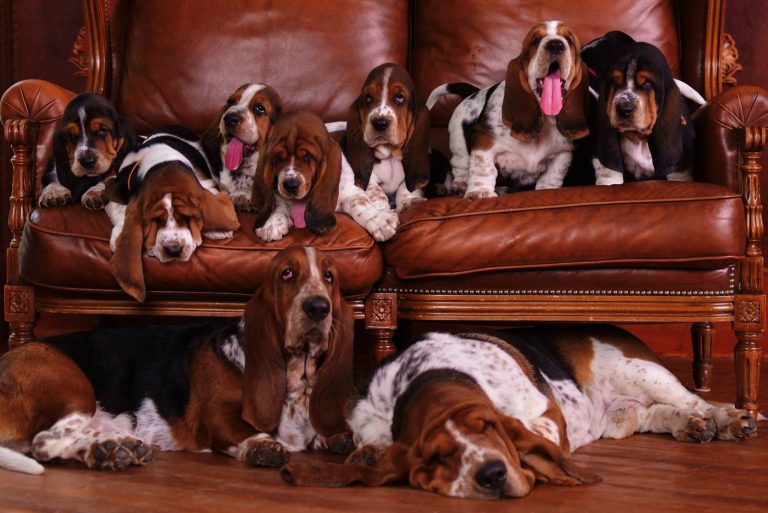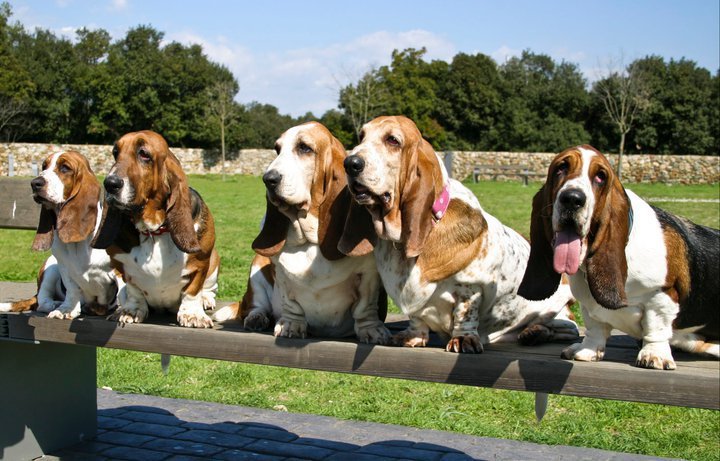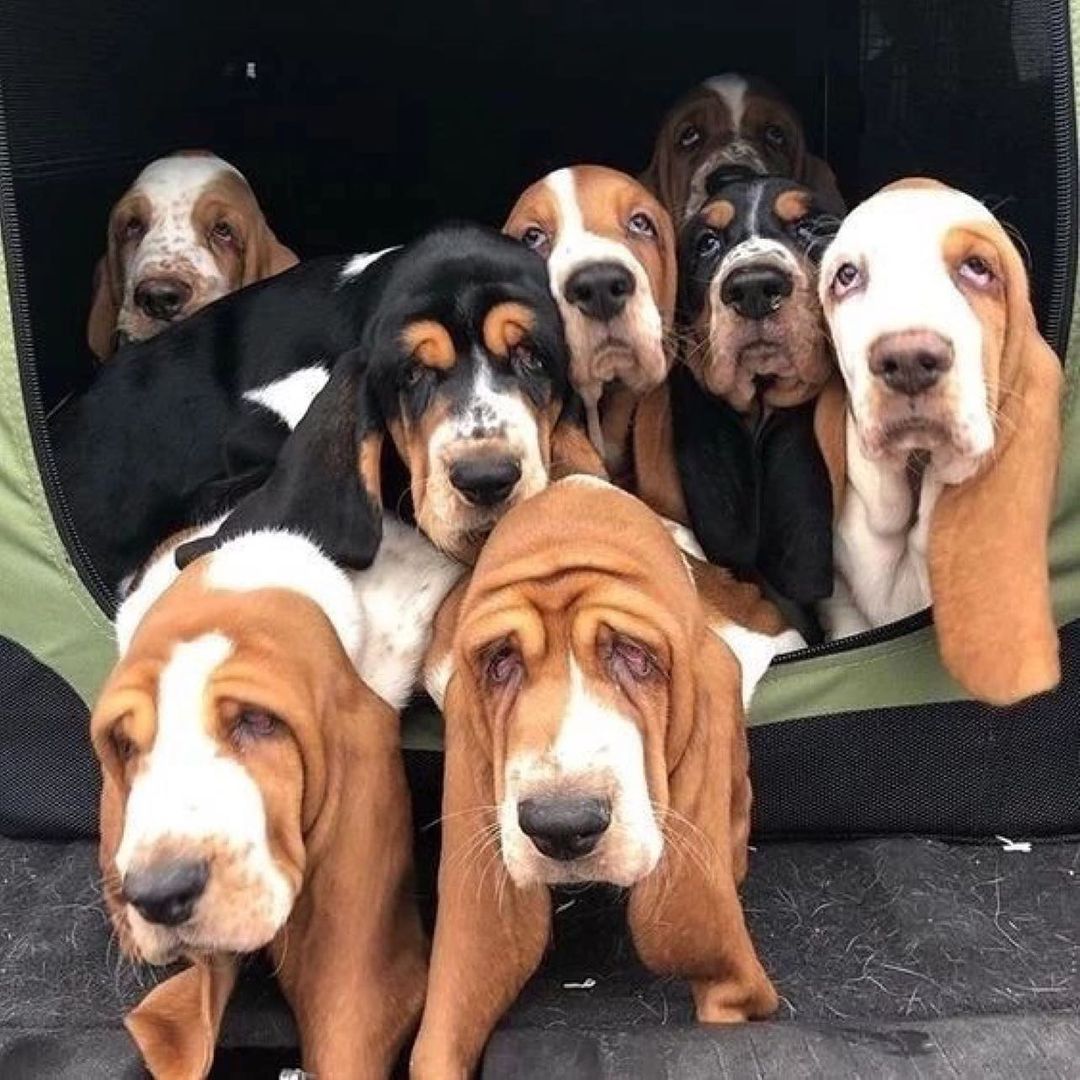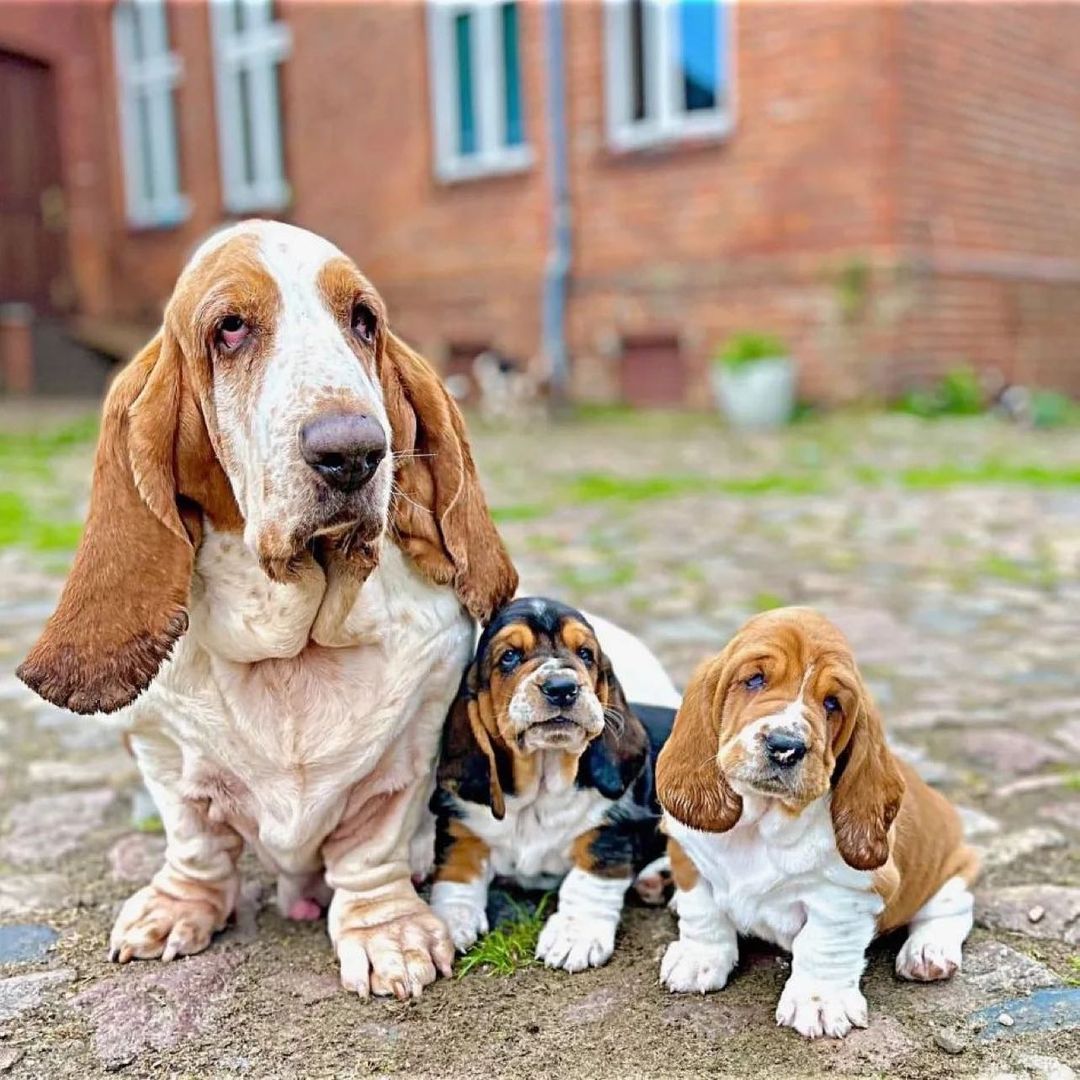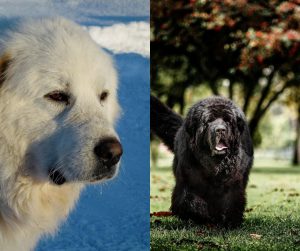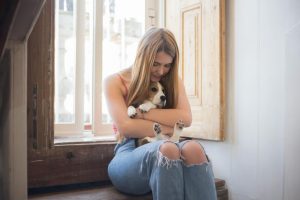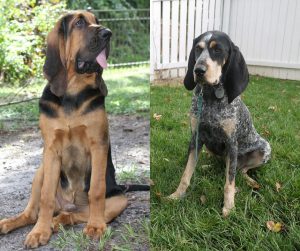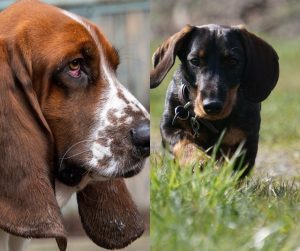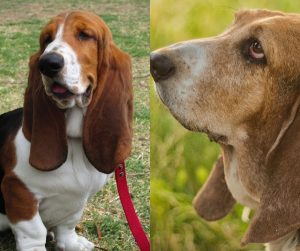Basset Hounds are adorable dogs recognizable for their sad, droopy eyes. One of the best family dogs, they are even-tempered and happy to nap on your lap. Outside, they will go after a scent trail, because after all, they are hounds.
Here is a fun fact. Their long, floppy ears life and trap scents as they walk. As you can see, their long ears are not there just for appearance. They have a purpose as well.
When you look at Basset Hound colors, you will notice they have different distinct colors and markings. They are different from most hunting dogs. Unlike other hounds and hunting dogs, a Basset Hound puppy can acquire any color. These canines can be white, brown, or even black in color. Yes, you can find a white Basset Hound or a black Basset Hound.
Their brown color can range from lemon Basset Hound to dark red Basset Hound. With that in mind, let’s take a look at the different hound coat colors.
History of the Breed
The Basset Hound is a French-born dog. Descended from the 6th-century hounds belonging to St. Hubert of Belgium, they were bred at the Benedictine Abbey. In the beginning, they were known as St Hubert’s Hound.
The first mention of a Basset Hound puppy came in the La Venerie, which is an illustrated hunting text written by Jacques du Fouilloux in 1585. The name has origins in the Latin language. There, the word bassus is used for low. Add in the French diminutive –et, and you have a term for a low dog.
These dogs became popular during the reign of Emperor Napoleon III. In 1853, Emmanuel Fremiet, the leading sculptor of animals in his day, exhibited bronze sculptures of the Emperor’s Basset Hounds at the Paris Salon.
Ten years later, we had the first exhibition of dogs held in Paris, where Basset Hounds gained international attention. The controlled breeding of the canine began in France in 1870.
In that same period, the English began importing these dogs into England.
Originally, Basset Hounds were bred to hunt, with a keen nose and short stature suited to small-game hunting on foot.
Appearance Standard
Let’s talk briefly about the dog breed info of Basset Hounds. The breed is recognized by the American Kennel Club. As such, there is a breed standard. Like its ancestor the Bloodhound, the Basset Hound has a hanging skin structure, causing the face to have a sad look.
And this is why many people find the Basset Hound charming. His sad, droopy eyes add to the breed’s charm.
Speaking of the appearance of the canine, these dogs are large, solid, and short, with a long, curved saber tail held high over their long back. They can weigh between 40 and 75 lbs. Fun fact, despite their rather small size, they are heavy due to their heavier bones.
Standard Basset Hound Colors and Markings
The Basset Hound coat color is excellent. Their coat can be either bicolored or tricolored. If you take a close look at the dog, you will notice that the head, shoulders, and back coat colors are different from the underbelly coat and chest coat.
The American Kennel Club accepts blue tones of the Basset Hound, but not pure blue tones with black markings.
The standard three colors of the Basset Hound dog breed are white, brown, and black. There are shades of each color.
To this day, many people confuse brown with fawn. It is worth noting, that the AKC doesn’t recognize solid colors for Bassets. There is no such thing as a purely white Basset Hound or a purely black Basset Hound.
All Basset Hound Colors
Now let’s take a look at some of the common Basset Hound colors and patterns. As you will see, the variety is extraordinary.
- While it is hard to find pure black or pure white, you can easily find black and white Basset Hounds. Pure white and pure black is hard to get, but the white and black combination is quite common
- Lemon Basset Hound is another pure color that is hard to get. These dogs get their name from the lemon color because they are almost pale yellow. These dogs do not have tan marks. The American Kennel Club recognizes lemon and white Hounds as standard dogs, but they are not seen often
- Tan and white is a slightly similar marking but with a slight difference in the depth of the fawn color between lemon and tan Basset Hound. Listed as bi-colored dogs, they have a shade that is neither black nor white and closer to brown
- Chocolate-colored dogs, or brown and white Bassets, are some of the cutest. Their black counterpart is not as popular. But a dog with chocolate color and white ticking is adorable
- Mahogany and white is another option, with mahogany being a deep brown shade with red undertones. Bassets with these markings differ from their red and white counterparts by the presence of black hairs
- Blue and white Bassets are some of the rarest. Blue in particular is one of the rarest colors for any breed, be it Pitbull, French Bulldog, or Basset Hound Blue puppy. Breeders are even trying to get a Blue Basset Hound, but it is not easy. On the rare occasions that it happen, the price is quite expensive due to the rare color
- Red and white is a dog with red spots all over the body, and a darker coat than the tan and lemon Basset Hound
- Black mask marking makes a cute illusion surrounding the eyes of your Basset like a real mask. The mark continues to the ears, nose, and the forehead. This mark occurs mainly in lemon, red, brown, and mahogany hounds
- Tri-colored Basset Hounds are different from the bi-colored by the presence of another color. Their changes are seen from the seventh to eight week. This is when the black and dark brown color on the heads fade in spots and end up as tan and light brown. The result is a nice blend of three colors
- Let’s finish off with the Ticking Basset Hound dog, one that is black and white with black ticking
Basset Hounds in Pop Culture
Before we go, I would love to address the popularity of this breed. The Basset Hound is one of the more popular dogs in pop culture. Here are some spots where he has appeared
- Time magazine featured a Basset Hound on the front cover on February 27, 1928, for a story about the 52nd annual Westminster Kennel Club Dog Show at Madison Square Garden
- The popular cartoon character Droopy is one of the many Basset Hounds appearing in animated Disney films
- There is a Basset Hound in the Smokey and the Bandit movie series, a dog named Fred picked personally by lead actor Burt Reynolds
- You can see Flash, a Basset appearing in the Dukes of Hazzard, appearing as a companion to Sheriff Rosco
- In the 1986 Disney film The Great Mouse Detective, we have Toby, serving as the dog of Sherlock Holmes

